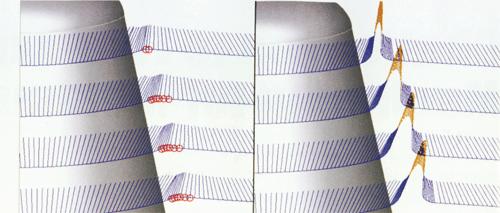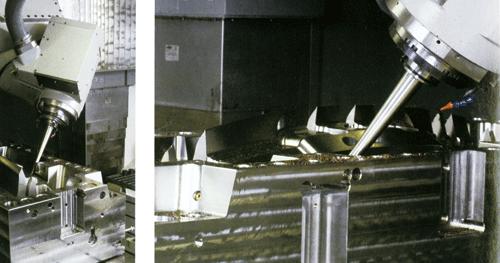When evaluating CAM software for tooling, especially for deep cavity tooling, there are many factors to consider, such as the flexibility of a five-axis function, the reliability of a five-axis cutting path, ease of use, and the limits of a five-axis milling machine. It is not possible to use a five-axis case.
1, flexible
Flexibility is an important feature to consider in a five-axis milling strategy. If users are using a three-axis CAM package with multiple strategies, why consider using a few five-axis strategies?
One of the latest ways to provide flexibility is to use CAM software modules that automatically generate toolpaths in all aspects of mold making, stamping, and tooling. Simply put, this module automatically converts the triaxial cutting path into a five-axis machining path, so that the tilt angle of the rotating tool is sufficient to avoid vibration, which also brings greater flexibility because all three-axis finishing paths Can be converted to a five-axis environment.
2, reliability
The reliability of the five-axis machining tool path is very important, because the two rotary motions are added to the five axes, and the possibility of vibration is greatly increased. Therefore, vibration detection and avoidance measures must be reliable, otherwise it will cause damage to expensive equipment.
3, ease of use
Easy-to-use and five-axis programming were once considered mutually exclusive, and five-axis programming was considered difficult, time consuming, and interference was severe. But to stay competitive, ideas must change. If you use CAM software that automatically generates toolpaths in surface or solid mold machining, creating a five-axis toolpath is as simple as creating a three-axis toolpath because such CAM software can perform five-axis programming of complex deep cavity mold workpieces. And you can avoid vibration.
4, five-axis equipment restrictions
The limitations of the five-axis equipment can affect how to select the five-axis machining of the mold. The CAM software must be able to simulate a specific five-axis device and adjust the tool path to avoid motion to the spinning limit. If a five-axis device has a limit on the C-axis, the CAM software must be able to place intermittent motion into the tool path while maintaining a vibration-free tool path.
In addition, many five-axis configurations have different limits on their A/B axes. For example, a machine can rotate at -90° on the A-axis, but only +15° is allowed in the forward direction. Therefore, it can be understood that the CAM software will automatically Limits are taken into account to avoid overshoot in the positive direction.
5, can not use the five-axis case
In some cases, it is not advisable to use a five-axis solution. For example, the tool is too short or the tool holder is too large to avoid vibration under any tilt angle. Does the CAM system stop at this point? Is it possible to create a tool path at all? Did you show the problem area?
If you let the user take on a lot of trials and errors, or recalculate the entire tool path, this will definitely have an adverse impact on the entire production. It is best for the CAM system to be able to identify problem areas, using longer tools, shorter tool holders or simply editing these points.
Figure 6 shows the vibration range of some of the points, which can then be automatically eliminated (Figure 7), so that most of the workpiece can still be cut with a short tool.

Figure 6 The vibration of the marked point is replaced by radial motion

Figure 7 Using the tool automatic anti-vibration device to generate a synchronous five-axis tool path, milling the workpiece completely with the shortest possible tool
in conclusion
The simultaneous five-axis tool path allows the entire workpiece to be machined with short tools without the need for long tools in a three-axis environment. Five-axis machining reduces the amount of electrode used and the operational steps of EDM processing. Synchronous 5-axis machining reduces problems with 3+2 axis machining, such as creating multiple oblique views and merging all oblique views.
Previous page
Kitchen Faucets With Sidespray
Yuyao Zelin Sanitary Ware Co., Ltd , https://www.kitchen-sinkfaucets.com
